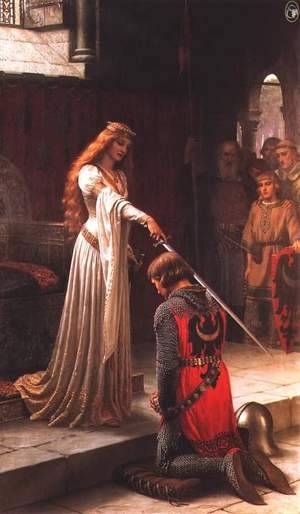Feo Takahari
 Auror
Auror
I'm writing a sequence in which a character takes on both the appearance and the outfit of an armored knight, step by step. As part of this, I need to describe the clothing and armor of a knight (from a parallel universe with magic and monsters, but most likely equivalent to a western European around 1000 AD.) I can find history-oriented sources that fully depict what a knight in plate armor would wear, but for chain armor, they solely depict the knight's upper body--all the depictions I can find of legs and feet come from fantasy fiction.
Were chain leggings an actual thing, or were they just something fantasy writers thought up? And what about the clothes under the leggings? And what sort of boots would a knight wear? And what about that thing they're sometimes shown wearing over armor that shows the crest of their lord--what would you even call that?
Basically, how much of this picture is historically accurate, and how much of it is imagined?

P.S. For what it's worth, I've already found Medieval Armor A Primer for Writers, so I at least know about gambesons and such.
Were chain leggings an actual thing, or were they just something fantasy writers thought up? And what about the clothes under the leggings? And what sort of boots would a knight wear? And what about that thing they're sometimes shown wearing over armor that shows the crest of their lord--what would you even call that?
Basically, how much of this picture is historically accurate, and how much of it is imagined?

P.S. For what it's worth, I've already found Medieval Armor A Primer for Writers, so I at least know about gambesons and such.


 Myth Weaver
Myth Weaver Sage
Sage Inkling
Inkling